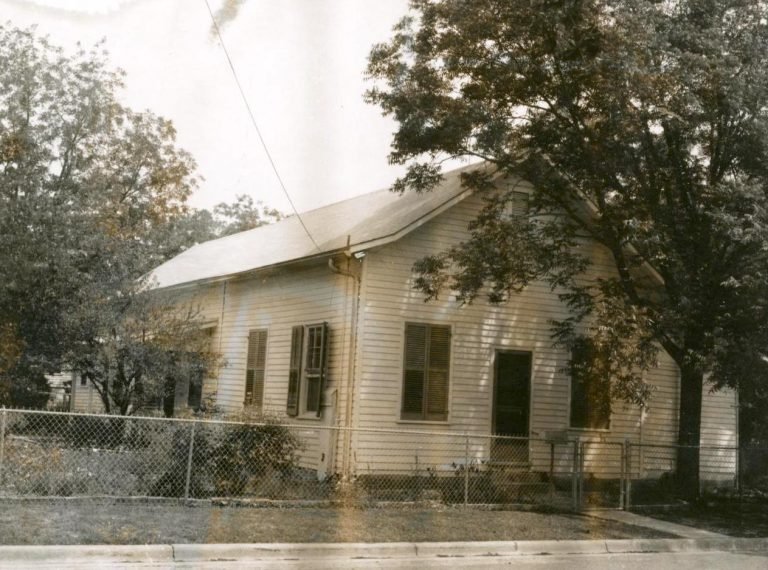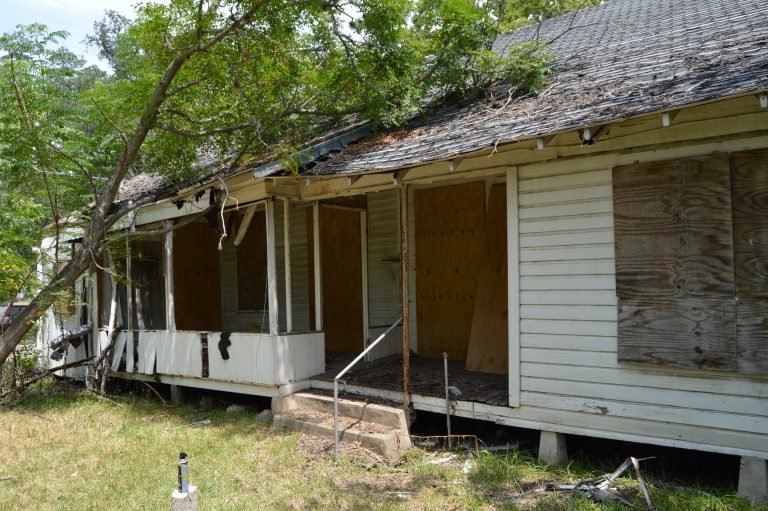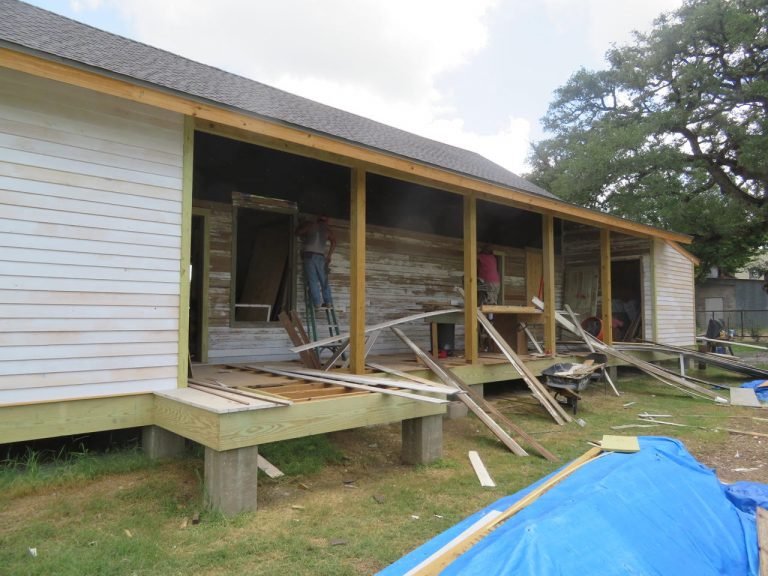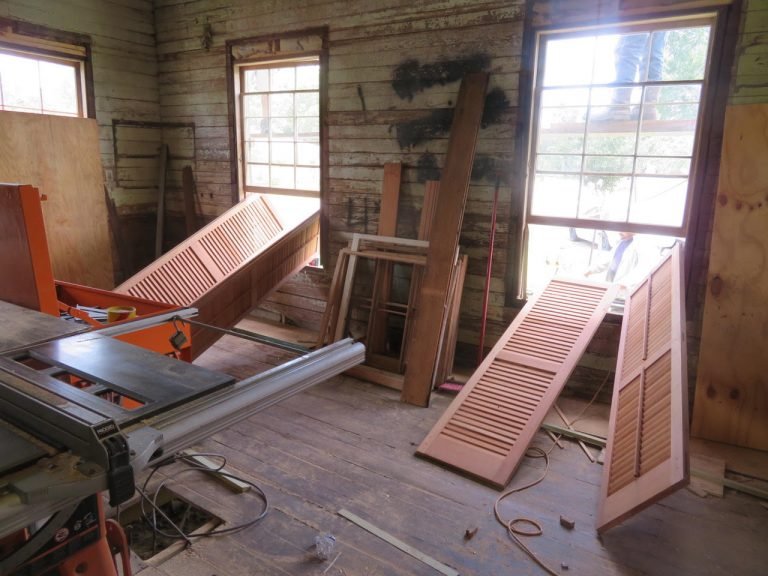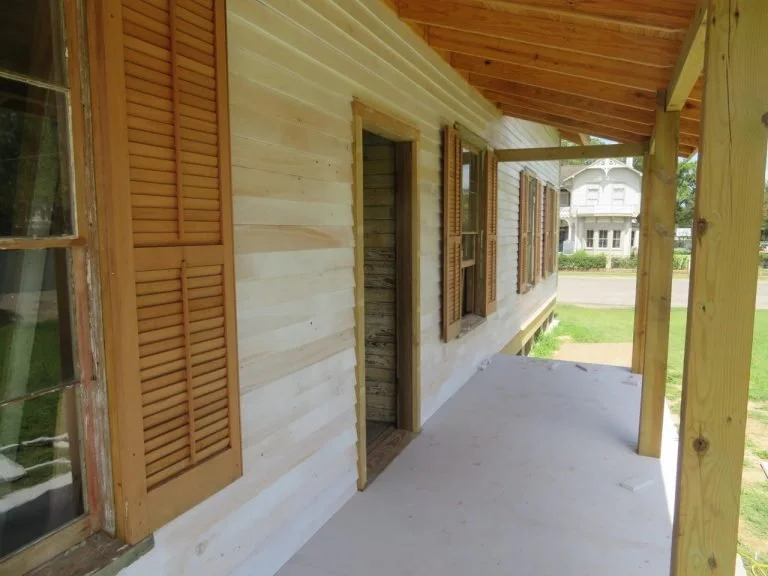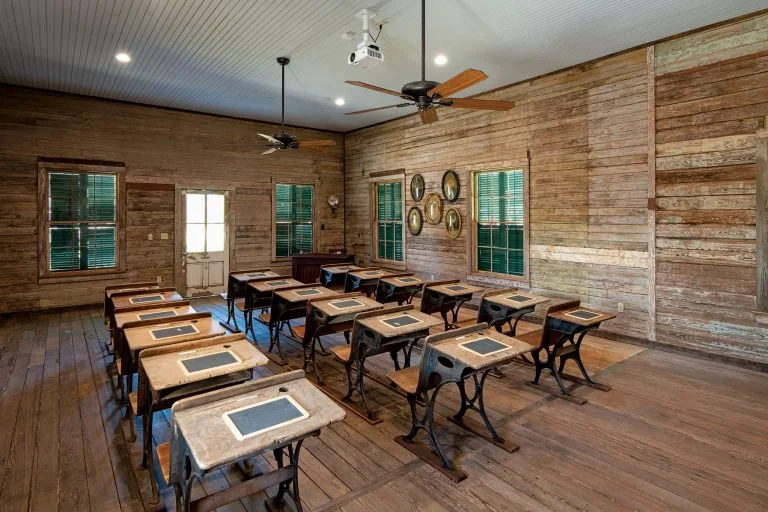English-German School
PT Recognizes Rehabilitation of English-German School in Cuero with 2021 Honor Award
Preservation Texas, the statewide non-profit historic preservation advocacy and education organization, is proud to announce the rehabilitation of the Robert L. Oliver English-German School in Cuero, Texas as one of only nine projects being recognized with its 2021 Preservation Texas Honor Award. The nearly 150-year-old school was previously included on the Preservation Texas Most Endangered Places list in 2017. The award for the English-German School was presented by PT board members August Harris and Kate Johnson at a meeting of the Chisholm Trail Heritage Museum‘s Board of Directors in Cuero on August 24, 2021.
The beautifully rehabilitated building is now located behind Cuero’s award-winning Chisholm Trail Heritage Museum.
“This challenging project was well-executed and serves as an example of what dedication and skill can achieve,” wrote one of the Honor Award jury members. The building was saved and rehabilitated by the Chisholm Trail Heritage Museum. The Board recently renamed the building for Robert L. Oliver, under whose leadership the Museum’s board accomplished this project.
The school was used as a residence for most of the 20th century. In 1965, it was recognized as a Recorded Texas Historic Landmark.
Thought to be the oldest school in Cuero, it was built before 1880 and used to teach classes in both English and German. It functioned as a school until 1894, when it was sold and converted into a private residence. Condemned by the City of Cuero after years of neglect and the impact of a 1998 flood, concerned Museum board members stepped in to initiate its rescue in 2014. One board member purchased property adjacent to the Museum to which the school could be moved, and several other board members agreed to fund its relocation. Importantly, the owner of the building, Richard Mundt of Victoria, generously gifted the structure to the Museum with the understanding that it would be restored and returned to its use as an educational facility.
The school as it appeared prior to its relocation in 2014.
The school was in poor condition by the time the City of Cuero condemned it in 2013.
After much preparation, the school was relocated in the fall of 2014 from its original site at 201 East Newman Street to its new home. The move required careful coordination with the City of Cuero, Time-Warner Cable, AT&T, and Union Pacific Railroad to avoid any damage to the structure itself and existing structures along the route. By this time, exterior surfaces had deteriorated, vandals had defaced the interior walls, windows were broken out and trees had fallen through the roof. In addition to these physical challenges, none of the electrical wiring or plumbing was up to code. But while much of the exterior and interior components and finishes of the building were in poor condition the overall structure was in good condition.
The building was relocated in September 2014 to its new location.
The project was guided by Lewis Fisher and Fisher Heck Architects of San Antonio, a firm that has won numerous Preservation Texas Honor Awards. Initial work addressed urgent structural repairs including the repair of damage to floor timbers and the roof. Exterior work also included the repair and replacement of damaged and missing exterior siding. Once these projects were completed, work focused on restoring the appearance of the building to the period when it was in use as a school from about 1880 to 1894. Thus the rehabilitation of the building included reconstruction of missing exterior elements, including porches, and repair and reconstruction of historic window sashes and operable shutters.
The deteriorated porch was reconstructed.
Inside, the 1998 flood had caused extensive damage to interior walls. But because the original two-room school had been subdivided into eight rooms, walls that had been added after its conversion to a house were removed and the original wood walls were stripped, cleaned, and repainted.
The interior had suffered from years of neglect, but much of its historic fabric remained.
New plumbing and electrical wiring was installed to bring the building up to code. The original schoolhouse was not designed as a climate controlled building, which required extensive work to install HVAC to protect museum artifacts while allowing year-round use by the public. Modern conveniences were added so that the building can function as a meeting space, and one room was selected for sound proofing to serve as a recording studio that allows Museum guests to record their oral histories.
Historic window sashes were repaired, while surviving original shutters served as a model for new shutters that were missing.
The property on which the English German School is now located was once an unsightly lot that included a dilapidated manufactured home. Significant improvements were undertaken to prepare the property before moving the school. After rehabilitation, nearby century-old live oak trees were cleaned of ball moss, new concrete ADA-compliant walkways and a ramp were constructed, a new lawn was planted, and an irrigation system was installed. Period-appropriate light poles were installed around the property’s perimeter, which matched existing lighting installed on Museum property in previous restoration projects. Raised garden beds were also constructed behind the structure, allowing for educational programming that focuses on food that would have been grown during the late 19th century.
The award-winning rehabilitated school now serves 21st century educational purposes within a historic setting. Shown here, a portion of the building is interpreted as an early school room.
In the short time period that the English-German School has been put in use by the Museum, its impact as a place for community events and educational experiences has already been felt throughout Cuero and the region. The school once again provides classroom space for a range of programs, from adult education classes focused on Texas and Western history to youth programs such as the annual Cowboy Camp. Adults and children alike are learning the practices of growing one’s own food while learning the technique of canning vegetables in the school’s kitchen.
The Rehabilitation of the Robert L. Oliver English-German School is an outstanding achievement. The project will serve as an example to Texans across our state, while fulfilling an important role in the education of Cuero’s residents and visitors for decades to come. “This project serves as an inspirational example to all those working to save endangered places,” said Preservation Texas Executive Director Evan Thompson. “Through careful planning, patience, determination, and a commitment to preservation, Cuero has once again rallied to the defense of its irreplaceable heritage.”


